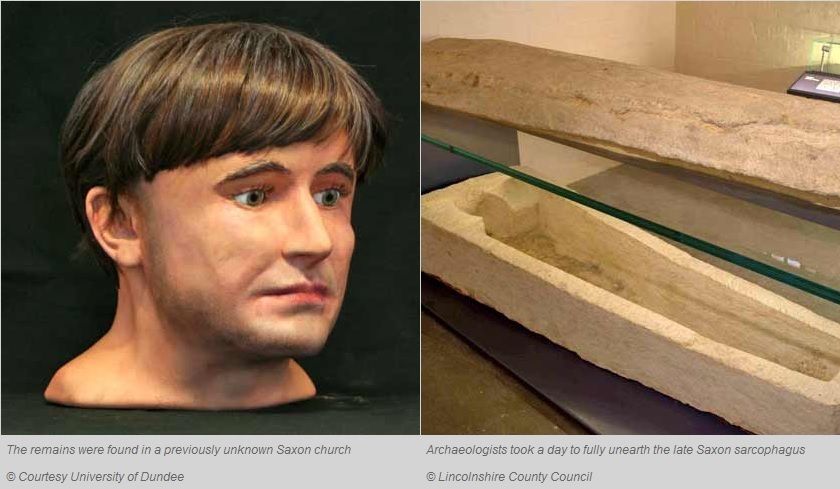Post by UKarchaeology on Sept 25, 2015 0:33:25 GMT

Active and strenuous lifestyle could have caused degenerative bone diseases in man who died nearly 1,000 years ago
An Anglo-Scandinavian man whose skeleton was discovered within old church grounds has been recreated by experts as part of an exhibition inside a Victorian Prison at Lincoln Castle.
Caroline Erolin, an expert from the University of Dundee’s renowned centre for human anatomy, disaster victim identification and forensic and medical art, said the man’s skull had been excellently preserved by his position under an important sarcophagus burial, making it “the best candidate” for reconstruction out of ten skeletons found at the castle.
“The burial of this man was one of eight which were interred inside a small stone church or chapel which predates Lincoln Castle and was previously unknown,” said Cecily Spall, from archaeologists FAS Heritage.
“Osteological analysis identified the skeleton as that of a man aged between 36 and 45 years old.
“He had suffered from a range of degenerative bone diseases, suggesting an active and strenuous lifestyle. His body was buried in both a wooden coffin and cloth shroud.
“High-precision radiocarbon dating indicates he died between 1035 to 1070, just before the Norman Conquest.
“Isotope analysis of his bones and teeth suggests that he originated in eastern England and could well have been born and bred in Lincolnshire.”
The figure will reappear alongside the limestone sarcophagus, which attracted national media attention when it was found under the floor of the church, as well as a Roman bronze eagle’s wing from the late 1st century, thought to have been part of a grand imperial statue in the nearby forum.
Finds from a late Roman town house, unearthed where the Magna Carta Vault not stands, and a stone scratched with the names of prisoners awaiting transportation to Australia will also be revealed.
Nick Worth, of the City of Lincoln Council, said the castle site – reopening to the public on Monday following a £22 million project to create new attractions including a complete circular walk and a cinema – was a “significant” and “enigmatic” archaeological location.
“Apart from the archaeological evidence of the medieval castle itself, its grounds include important remains from Lincoln’s Roman past,” he added.
“This new exhibition shines a light on that past, giving glimpses of what life was like for people living on the castle site from late Roman and medieval times through to the Georgian and Victorian eras.”
(pics & source at: www.culture24.org.uk/history-and-heritage/archaeology/art528226-forensic-experts-recreate-middle-aged-anglo-scandinavian-man-found-beneath-lincoln-castle )
